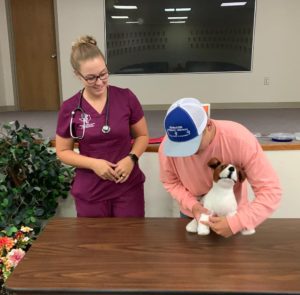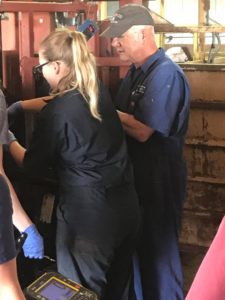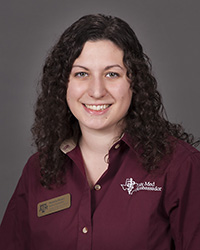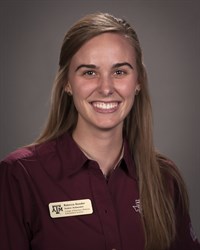
This summer I had the opportunity to do an externship close to home and apply the knowledge from my first year of veterinary school.
I joined in on the Veterinary Education Research Outreach (VERO) externship program at West Texas A&M University that is offered for second- and third-year veterinary students. During this time I worked closely with Dr. Dan Posey, clinical professor of veterinary science and the academic coordinator of the VERO program, who provided more opportunities than I could experience in one summer.
Though I am from the area, this was a new experience for me because it was more focused on the veterinary side of the industries available there.

Every new experience I have makes me more excited for my future as a veterinarian, and this one was no exception.
Sometimes it’s easy to get caught up in school, but these opportunities outside of class put everything into perspective.
Even with only one year under my belt, I was able to talk through diagnostics, surgery approaches, and treatment plans without feeling like I was listening to a foreign language. I had the privilege of teaching 4-H veterinary science students how to perform a physical exam on a dog, horse, and cow.
Now, beginning my second year, I have already applied the things I learned this summer, and I know I can expand on the areas I didn’t fully understand.

Every day was different, just like it will be in a mixed animal practice, and if I enjoy each day and challenge as much as I did this summer, I don’t think I will work a day in my life.

 Now that Christmas break has come and gone and we are now back at school this week for spring semester, I am finally in the homestretch of my path of becoming a veterinarian. After my spring semester finals, I will be going straight into my clinical year this May. During our clinical year, each student takes a core set of rotations in both the small and large animal hospitals, since as veterinarians we are licensed to work on all species.
Now that Christmas break has come and gone and we are now back at school this week for spring semester, I am finally in the homestretch of my path of becoming a veterinarian. After my spring semester finals, I will be going straight into my clinical year this May. During our clinical year, each student takes a core set of rotations in both the small and large animal hospitals, since as veterinarians we are licensed to work on all species. As happy as I am to be back in College Station and in the midst of my second year of veterinary school, I can’t help but long for the days of this past summer—waking up at 2:30 a.m. each day, throwing on my coveralls and tall rubber boots, and having the amazing opportunity to spend my days working alongside veterinarians and health technicians on a commercial dairy in northeast Texas. Whether we were ultrasounding cows to confirm pregnancy, performing a necropsy, discussing a mastitis outbreak, dehorning heifers, or vaccinating calves, I loved it all; each day ended with me being even more excited about pursuing a career in dairy production medicine upon graduating from vet school in May 2020.
As happy as I am to be back in College Station and in the midst of my second year of veterinary school, I can’t help but long for the days of this past summer—waking up at 2:30 a.m. each day, throwing on my coveralls and tall rubber boots, and having the amazing opportunity to spend my days working alongside veterinarians and health technicians on a commercial dairy in northeast Texas. Whether we were ultrasounding cows to confirm pregnancy, performing a necropsy, discussing a mastitis outbreak, dehorning heifers, or vaccinating calves, I loved it all; each day ended with me being even more excited about pursuing a career in dairy production medicine upon graduating from vet school in May 2020.